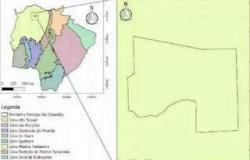T-shirt collector soccer, João Crumo proudly displays the approximately 140 pieces gathered in his home, in the city of Taubaté, after years of mining and a lot of money spent. There was a moment, during 2021, when he realized he was spending too much and started turning to Chinese websites that offer replicas at very low prices. Today, this type of product represents just over a third of its collection.
“Today I must have around 100 originals and 40 ‘second-hand’ ones”, explains Crumo, who is a 30-year-old journalist and Estadão. The change in consumer behavior was due to the value of the shirts, which he considers to be too high. “Today, in Brazil, it is impossible to spend R$350 or R$400 on a shirt. The price, unfortunately, was the main reason for me to migrate”, he concludes.
The collector does not have a specific frequency for purchases, but tries to take advantage of the launch of new models to purchase the previous season’s editions. The version fan The 2023/2024 Corinthians shirt, for example, costs R$299.99. With the launch of the 2024/2025 model approaching, the price dropped to R$170.99.
Crumo also gives priority to purchasing shirts with title patches, when his team, Palmeiras, is champion. As for special or commemorative editions, you prefer to search through official channels. “But, of course, I always look at the price. I would never pay a thousand reais for a shirt. Today’s values are unrealistic, at least for me.”
The current Palmeiras number 1 shirt, fan version, is sold at R$ 369.90 at the club’s official store. Crumo bought a replica for R$59.90, an impractical price for large sporting goods companies. After all, what stops football shirts from being cheaper?
Taxes make up a large part of the value
The price paid by the final consumer of football shirts is greatly influenced by taxation. The sale is subject to ICMS, which depends on each State and can start at a rate of 17% and normally reach around 20%. There are also other variables related to the particularities of each company.
“The shirt factories themselves and the stores (physical or virtual) collect their own income, revenue and payroll taxes (depending on the legal regime they are subject to)costs that end up being passed on in the price and that don’t even allow us to know exactly how much tax the consumer is paying”, explains Livia Heringer, lawyer at Ambiel Belfiore Gomes Hanna Advogados and specialist and master in tax law.
The Sports Industry and Commerce Association (Ápice), formed by the union of national and international companies in the sector, estimates the total tax burden on a national club football shirt at between 35% and 40%. In the case of foreign products, it can reach 50%.
“It is very charged and directly influences, of course, the price of the product for the end consumer, on the shelf. It is even a higher level than we find in other countries. This does influence the final price of the product. And, of course, influencing the final price of the product, it also has an impact on piracy”, points out Renato Jardim, executive director of Ápice.
“The higher the price of the original product and, therefore, this price is influenced by taxation, the greater the difference between it and the pirated product. And then, there is a greater need, so to speak, for consumers looking for the product to end up buying a pirated product”, he adds.
Ivan Martinho, professor of sports marketing at ESPM, also remembers the high cost of transport. “The increase in prices for the final consumer may be linked to the increase in the cost of production and the retail chain until it reaches the fans,” he stated.
Is there a way to reduce the value of shirts?
Renato Jardim understands that the possible decrease in value requires more precise supervision in the fight against piracy and a tax readjustment process. “Having a tax system and having a ‘Brazil cost’, in general, more appropriate, more aligned with international practices, will make the price difference between the original product and the pirated product smaller and, as a result, will most likely reduce the incidence of piracy”, he says.
“The same thing in relation to inspection, which involves state, federal and municipal agencies. They need to act in a coordinated and aligned way. Things end up getting a little fuzzy… Who is the seller? Who is responsible? The marketplace platform? The one who offers? Ultimately, all of this needs to be better regulated, better provided for in legislation. And with that, there will be better identification and penalties for those responsible”, he adds.
Regarding the issue of taxes, Livia Heringer sees the current situation as far from the ideal scenario for a reduction in values to occur. “Today, there is no room for a reduction. Even more so after the approval of the tax reform PEC, which will do away with ICMS, ISS, PIS and COFINS, replacing them with IBS and CBS, which will have a single rate for all products sold within the same municipality. Furthermore, shirt factories (textile industry) benefit from payroll tax relief, allowing the sector to pay a contribution on gross revenue of 1% to 4.5%; in replacement of the 20% contribution to the payroll.”
How do clubs position themselves?
Brands usually sell at least two models of their shirts: the fan version, with an embroidered shield and less application of technology, and the game version, identical to the one used by athletes on the field. This second version brings the most exorbitant values. Palmeiras’ game shirt is sold for R$499. Flamengo’s, even more expensive, costs R$599.
To lower the cost, some clubs and suppliers of sporting equipment have opted for a third option, of slightly lower quality. Puma, responsible for the Palmeiras uniform, makes the version available Stadium (R$ 179.90), while Adidas, supplier of Flamengo, Internacional, Atlético-MG and Cruzeiro, has the line fan jersey (R$ 179.99).
“(The ‘Fan Jersey’ line) It’s almost 50% of the value of a game shirt”, says Nelson Pires, vice-president of marketing at Internacional. Gustavo Oliveira, vice-president of communication and marketing at Flamengo, highlights the importance of the action. “We will further expand the range of official Flamengo products, providing a large portfolio of quality products to serve our millions of fans”, he explains.
Raphael Campos, Sport’s vice-president of planning, states that the Recife club, sponsored by Umbro, tries to add revenue without taking away from the popularization of the sport. “Suppliers’ margins are increasingly tight due to the difficulty of combating piracy, and clubs end up being, in a way, hostage to this. We understand the market’s current situation, we cannot lose revenue, but, in a way, we need to popularize football,” he says.
To combat piracy, Fortaleza even offered a discount of R$10 to anyone who presented a fake shirt when purchasing the original model, in 2019. “The sale of official products is a very important revenue source. You need to understand that you are not just selling the shirt. Products contribute to putting together a cutting-edge squad”, says Fortaleza’s communications and marketing director, Marcel Pinheiro.
What sports equipment brands say
Searched for by Estadão, some of the main sports equipment brands that support Brazilian elite clubs have taken a stance on the prices of items sold to fans. Puma, Palmeiras’ current supplier, points out that it is committed to fair practices that follow market regulations. The company highlights that it has three versions of shirts being sold.
“Puma is a company globally committed to fair market practices for everyone, strictly following the regulations of each market where it operates. Today, Puma do Brasil presents to the market three different versions of game shirts that are sold to consumers at the launch starting at R$179.90: stadium, fan and player. The shirts Player (R$499.90) are exactly the same product used by athletes in games and offer the best Puma technology in the world, with an extreme focus on athletes’ performance. The models Fan (R$ 369.90) and Stadium (R$179.90) adaptably monitor the evolution of the material used by players”, wrote the company.
New Balance – which started to supply material to São Paulo this season, exclusively, after the end of the contract it had with Red Bull Bragantino – points out that, in addition to the shirts, it has other items in its portfolio and that there is a differentiation of prices according to each model.
“The pricing strategy for shirts and all items in the collection is made up of a series of variables, such as the material and technology used in the production of the pieces, in addition to commercial and marketing factors. Finally, New Balance reinforces that it is always attentive to the demands and desires of São Paulo Futebol Clube fans and that new items in the collection will be launched throughout the partnership”, stated the company.
Nike also highlights the existence of different models and prices for Corinthians shirts and other clubs with which it has an agreement and explains which factors are taken into account when assigning product values. “The price involves a series of costs associated with its technology, taxation and logistics, among other variables. Today, Nike offers consumers the ‘Fan’ version, with the same design, but more affordable than the ‘Player’ version, which features Dri-FIT ADV technology, Nike’s most advanced platform for football apparel.” .






